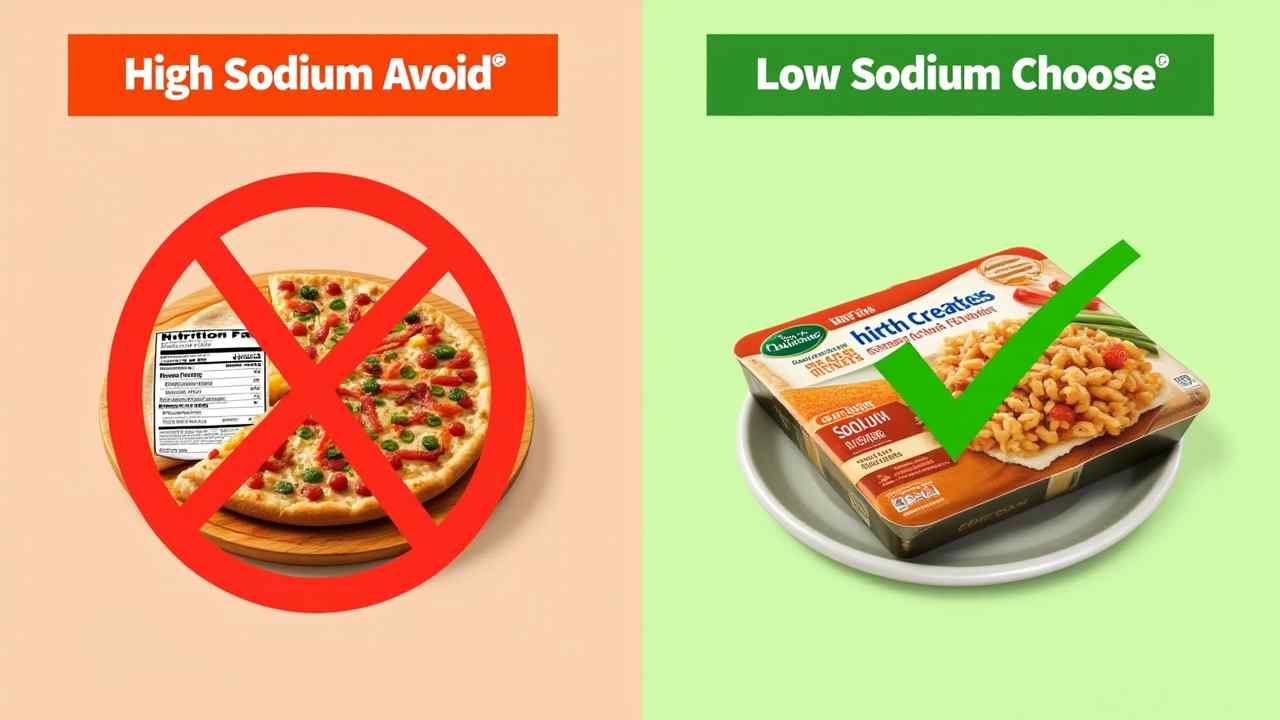
🧊 The Best Low-Sodium Frozen Diet Foods (A Shopper's Guide)
🧊 A Shopper's Guide to Low-Sodium Frozen Diet Foods 🧊
Following a low-sodium diet is a powerful step towards better heart health. In our busy lives, frozen meals offer incredible convenience. However, the frozen food aisle can be a major challenge for anyone watching their salt intake. Most frozen meals are notoriously high in sodium, which is used for flavor and preservation.
But don't despair! Finding healthy and delicious low sodium frozen diet foods is possible. You just need to become a smart and savvy label reader. With a little knowledge, you can enjoy the convenience of frozen foods without compromising your health goals.
This guide will show you exactly what to look for and what to avoid. Let's navigate the freezer aisle with confidence! ✅
Important Medical Note: You must follow the specific daily sodium limit recommended by your doctor (e.g., 1,500 mg or 2,300 mg). This guide provides general advice for making healthier choices.
🤔 How Do You Read a Label for Sodium?
The nutrition facts panel on the back of the box is your most important tool. Do not trust the claims on the front of the package. Here is what to look for:
- The Sodium Milligrams (mg): This is the key number. For a single meal, you generally want to look for options under 600 mg, and ideally much lower.
- The % Daily Value (%DV): A food is considered low in sodium if it has 5% DV or less. It is considered high in sodium if it has 20% DV or more.
- The Serving Size: This is a common trick. A package might seem low in sodium, but the serving size might be only half of the container. Make sure you are looking at the sodium for the amount you will actually eat.
✅ What Are the Best and Safest Low-Sodium Frozen Choices?
The safest way to control your sodium is to buy plain, single-ingredient frozen foods. This allows you to add your own flavor with herbs and spices. These are the best low sodium frozen diet foods.
Frozen Vegetables: This is your number one best friend in the freezer aisle. Plain, frozen vegetables—like broccoli florets, spinach, peas, or a vegetable medley—contain virtually no sodium. Steam them or roast them for a quick and healthy side dish.
Frozen Fruit: Just like vegetables, plain frozen fruits are naturally sodium-free. They are perfect for making healthy smoothies for breakfast or a snack.
Plain Frozen Protein: Look for bags of unseasoned, frozen chicken breasts, fish fillets (like salmon), or shrimp. These are fantastic staples to have on hand. You can cook them from frozen and season them yourself with salt-free blends, fresh lemon, and herbs like dill ("dereotu") or oregano ("kekik").
- Are There Any Good Pre-Made Low-Sodium Meals?
Yes, but you have to search for them. Many brands are now offering specific "healthy" or "low-sodium" lines to meet consumer demand. You must read the label of every single box, as sodium can vary widely even within the same brand.
Brands like Healthy Choice and some varieties of Lean Cuisine often have entrees that are lower in sodium than their competitors. Look for their meals that are specifically marketed as being heart-healthy. These usually have a controlled sodium content.
🚫 What Frozen Foods Should You Generally Avoid?
As a rule, some categories of frozen food are almost always extremely high in sodium. You should generally avoid these:
- Frozen Pizzas: The combination of cheese, cured meats, and sauce makes these a sodium bomb.
- Breaded and Fried Foods: Items like chicken nuggets or fish sticks are typically very high in sodium.
- Multi-Serving Casseroles: Large, family-style frozen lasagnas or pasta bakes are often loaded with salt.
By focusing on plain frozen ingredients and carefully reading the labels on pre-made meals, you can successfully use the freezer aisle to support your healthy, low-sodium lifestyle. ❄️